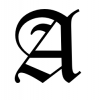14 Carat Adjusted Nib Vs. 18 Carat Nib
-
Forum Statistics
357.5k
Total Topics4.7m
Total Posts -
Member Statistics
129,928
Total Members18,857
Most OnlineNewest Member
BrianGED
Joined -
Images
-
Albums
-
USG 22
- By USG,
- 0
- 0
- 94
-
My photos
- By lamarax,
- 0
- 0
- 47
-
Baka's Pens
- By Baka1969,
- 0
- 0
- 22
-
more1
- By AmandaW,
- 0
- 0
- 26
-
Misfit’s 3rd Album for pens, paper, ink
- By Misfit,
- 99
-


















.thumb.jpg.f07fa8de82f3c2bce9737ae64fbca314.jpg)









Recommended Posts
Create an account or sign in to comment
You need to be a member in order to leave a comment
Create an account
Sign up for a new account in our community. It's easy!
Register a new accountSign in
Already have an account? Sign in here.
Sign In Now